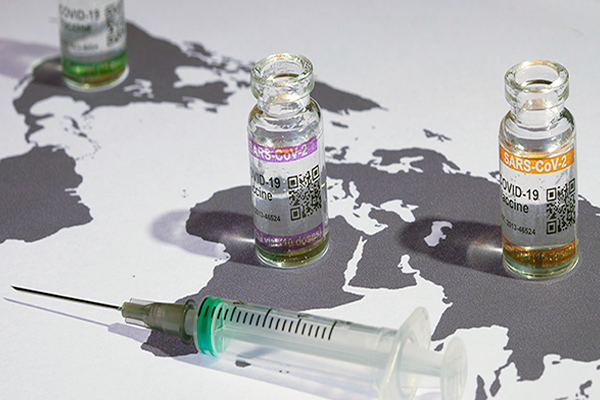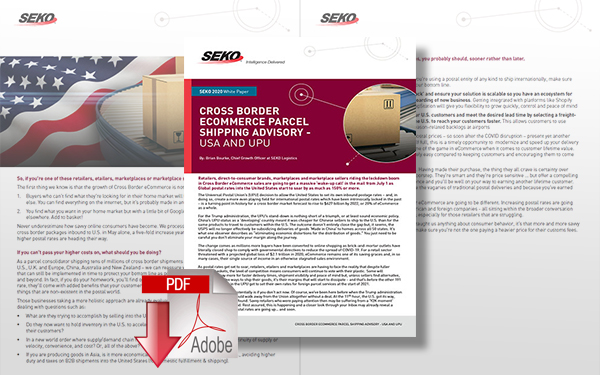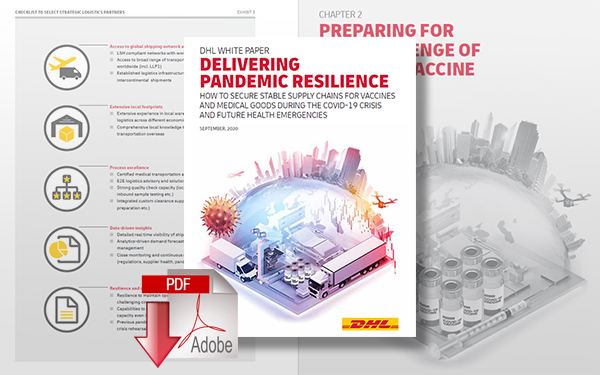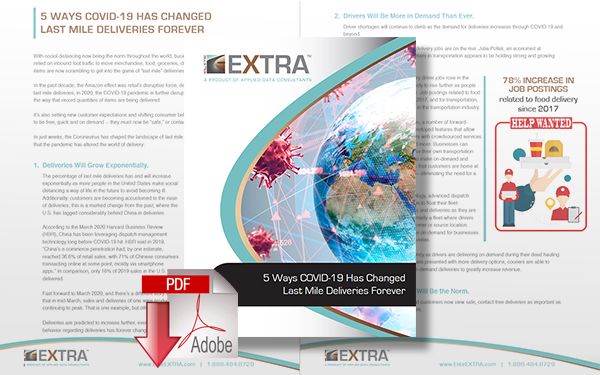The Logistics Challenges of COVID-19 Vaccination Distribution
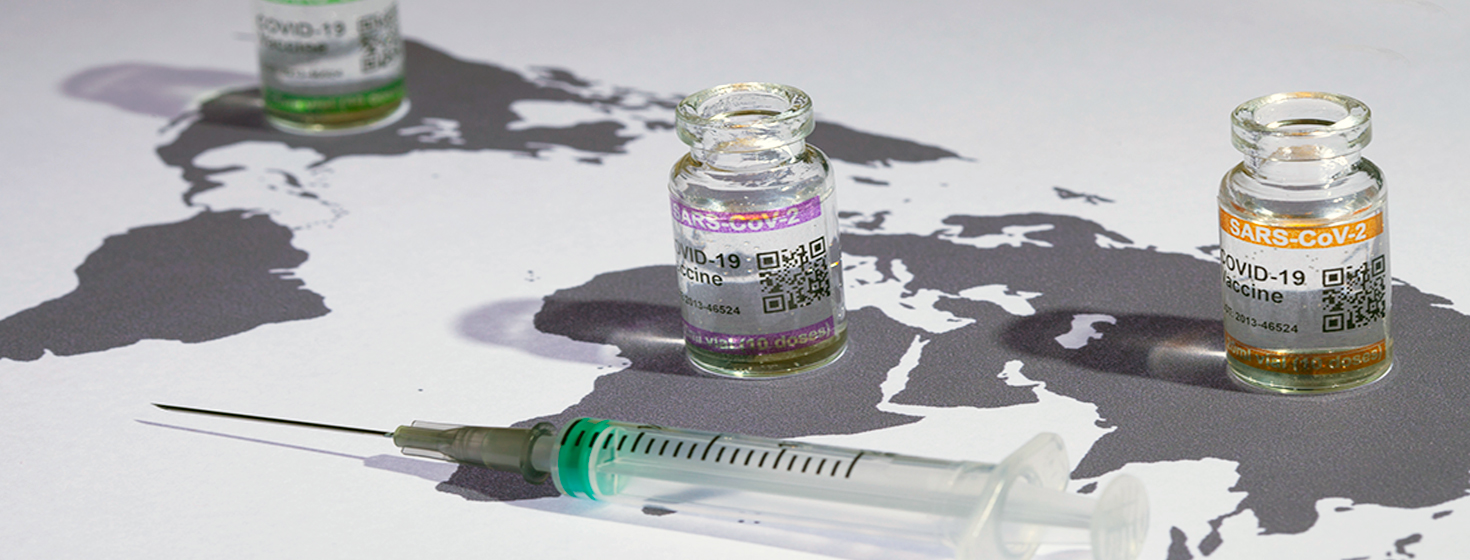
The process of COVID-19 vaccination on this scale is going to be an enormous task, but the fact we are even discussing it within a year of the start of this pandemic illustrates the collective effort already undertaken and the logistics capabilities moving forward.
The Logistics of COVID-19 Vaccination
It was a source of tangible hope and relief when it was announced in November that three viable COVID-19 vaccine options will soon be available to the public.
The developments from Pfizer, Moderna, and Oxford/AstraZeneca have come at phenomenal speed and, whilst this is encouraging news, the deployment and distribution of these vaccines bring to light an entirely new set of challenges for logistics companies already experiencing a year unlike any other.
With a huge surge in ecommerce since the start of the pandemic, logistics companies have been experiencing peak-like volumes for months and the 2020 holiday season promises to stretch capacity even further.
The deployment of COVID-19 vaccines will prove a challenge due to the volumes required, but also involving the intricacies of transportation and storage; testing the robustness of Global supply chains to the nth degree.
With expert insight from our Chief Growth Officer, Brian Bourke, we address some of the main challenges and what has already been done to prepare and execute the deployment of the COVID-19 vaccine.
A ‘Perfect Storm’ for Supply Chain Capacity
After millions of shoppers moved online in the wake of COVID-19 lockdowns, volumes increased and capacity was stretched to the max; sending postal and air freight rates soaring.
Given the time of year and holiday shopping about to take full flight, the collision of ecommerce and COVID-19 vaccine shipments is something of a ‘perfect storm’ in logistical terms.
As Bourke highlights: “A lot of companies are re-stocking inventory because of the surge in ecommerce, and at the same time you have the release of the iPhone, the new Galaxy phone, the new PlayStation, and the new Xbox – that puts a lot of pressure on the capacity of the global supply chain. That’s going to happen on a magnitude the likes of which we’ve not seen in a very long time, if ever, and it’s going to be a sustained effort.”
He adds: “It’s not just a lack of air freight capacity, [in the US] there aren’t enough drivers, there are not enough cars, vans, delivery vehicles. Because everything is happening all at once.”
What Are The Complexities of Vaccine Distribution?
Capacity for ecommerce shipping is one thing, and it’s something logistics providers have managed through the course of 2020, but the distribution of vaccinations on the scale that will be required is an entirely different ball game.
In short, it’s the biggest logistical challenge the world has ever seen.
“We’re just getting started,“ says Bourke. We’re only talking 20 million doses this month [December]. By April that scale may get up to 100 million or more per month.” An increased scale of distribution also increases the opportunity for disruption.
Some of the key elements of this are:
- Cold Chain Capacity
- Storage Requirements
- Last-Mile Delivery
Cold chain capacity is one of the most important factors in distributing any vaccine, but in the case of the Pfizer vaccine, which needs to be stored at below -70°c, it is simply something the supply chain is not currently prepared for.
Typically, cold supply chain carriers used to transport medical supplies operate roughly between two and eight degrees Celsius. This is okay for most vaccines, which are stored at around 4°c, and not too far off the requirements for Moderna’s vaccine, which is stable for 30 days between two and eight degrees, but it is way off the requirements for the Pfizer vaccine.
The cold supply chain issue is complicated further when it comes to distribution, particularly in parts of South America, Asia, and Africa. This is especially in regard to storage requirements. Not only is the climate hotter in these areas, but there may not be the infrastructure to support such storage. For example, if a power outage causes refrigeration to fail, the vaccines would likely be rendered useless. Storage capabilities will be hampered further by the volumes required, given that these areas are home to over six billion people combined.
Last-mile delivery is going to be one of the biggest challenges. “Trucking companies are shutting their doors right now, not because they ‘re closing down, but because they can’t take any more freight,” says Bourke. With a shortage of drivers across the board, currently, there isn’t the necessary staff to carry out the last-mile delivery from port to end destination. Once the vaccines do arrive, there will be a heavy reliance on local pharmacies for distribution and specialized training will be required. And as for those remote areas we mentioned earlier, the challenge of the last mile to rural healthcare centers, given the conditions required by the vaccine, is significant.
Once the vaccine arrives, there is the added complexity of different interval periods for a second dose and the process of prioritizing and tracking those who will be offered the vaccine first.
What Is Being Done To Prepare?
Despite these challenges, the fact that we have three potential vaccines available in the foreseeable future is an incredible feat and the logistical pieces of the puzzle are mobilizing on a massive scale.
As Bourke highlights: “The good news is that, as much of a huge problem COVID-19 is to the entire world, it’s the first time that all the smartest people in the world are working to solve the same problem.
“That’s why you’re seeing the rapid deployment of a vaccine and so too now you are going to see the rapid deployment of global logistics infrastructure in order to make sure that everyone is able to get the vaccine safely and effectively.”
Below we have picked out just a few of the ways that organizations are already beginning to address the logistics of delivering the vaccine:
- Investment in freezer farms
- Retro-fitting equipment
- Operation Warp Speed
The distribution of the vaccine is not going to be a two or three-week operation – it will be a lengthy process over many months. After the initial phase of deployment, as production increases, vaccines will need to be stored for a certain period, whilst supply chains catch up, just like the supply chain of PPE earlier this year. This is why companies like FedEx, UPS, and DHL are making massive investments in freezer farm capacity now so that a few months down the line, the vaccines can be stored appropriately before the distribution of second doses.
We have also seen many companies, including our partners at Pelican BioThermal in Dublin, Ireland, begin retrofitting their equipment to accommodate the storage requirements of the Pfizer and Moderna vaccines. Pelican BioThermal offers temperature-controlled logistics solutions in the form of its reusable Credo Cube, previously available for minus 20 and minus 50 degrees Celsius storage – their new minus 80-degree offering is a crucial development for the supply chain and many more will follow that lead.
In the US, we also have the implementation of Operation Warp Speed. The Trump administration will be leveraging the infrastructure of the US Armed Forces to distribute the vaccine across the country in a coordinated federal response, independent of Pfizer’s own supply chain.
Clearly, the process of vaccination on this scale is going to be an enormous task. But the fact we are even discussing it within a year of the start of this pandemic illustrates the collective effort already undertaken and our capabilities moving forward.
As Bourke suggests, there is cause for optimism as we come towards the end of such a challenging year.
Related Article: The Return of Retail in a COVID World
Related White Papers
United States Cross Border Ecommerce Parcel Shipping Advisory
Retailers, direct-to-consumer brands, marketplaces, and marketplace sellers riding the lockdown boom in Cross Border eCommerce sales are going to get a massive ‘wake-up call’ in the mail from July 1 as Global postal rates into the United States start to soar by as much as 150% or more. Download Now!
Delivering Pandemic Resilience
This white paper details how to secure stable supply chains for vaccines and medical goods during the COVID-19 crisis and future health emergencies. Download Now!
5 Ways COVID-19 Has Changed Last-Mile Deliveries Forever
For those businesses that have invested wisely in a technology partner during these tumultuous times, they will most assuredly stay in the game of last-mile deliveries as those partners are already engaging in future-ready features. Download Now!
More Resources on Coronavirus COVID-19
Article Topics
SEKO Logistics News & Resources
SEKO Logistics take a deep dive into supply chain complexities SEKO Logistics’ executives address Peak Season potential amid economic backdrop SEKO Logistics announces acquisition of Pixior LLC SEKO’s Bourke assesses key global logistics trends and themes Shutdowns in China leave things open-ended for supply chain stakeholders SEKO’s Gagne provides insights on 2022 supply chain and logistics landscape ShipStation welcomes SEKO’s LTL capabilities for its partner network More SEKO LogisticsLatest in Transportation
Baltimore Bridge Collapse: Impact on Freight Navigating Amazon Logistics’ Growth Shakes Up Shipping Industry in 2023 Nissan Channels Tesla With Its Latest Manufacturing Process Why are Diesel Prices Climbing Back Over $4 a Gallon? Luxury Car Brands in Limbo After Chinese Company Violates Labor Laws The Three Biggest Challenges Facing Shippers and Carriers in 2024 Supply Chain Stability Index: “Tremendous Improvement” in 2023 More Transportation